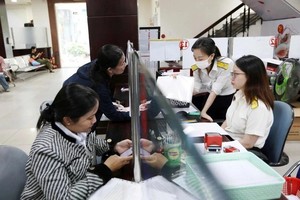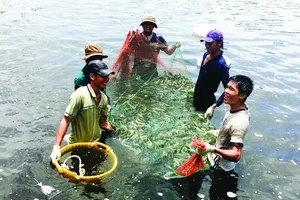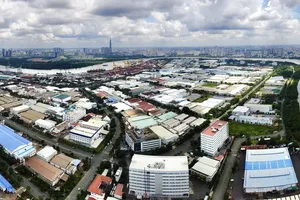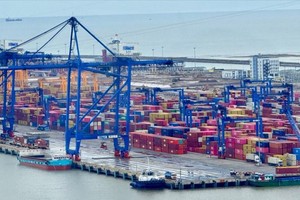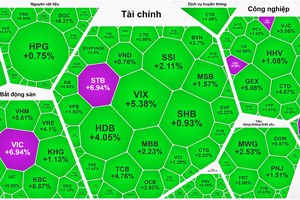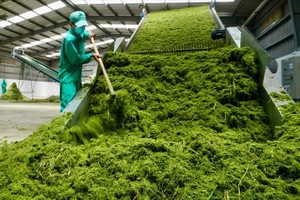During the first three months of the year, it has become apparent that China is emerging as a strong export destination for many Vietnamese agricultural products. With the US and European market still struggling to recover, China may well be the much-needed answer for Vietnam.
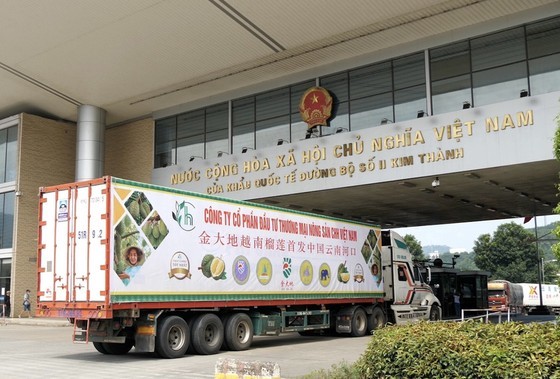 |
However, to be able to penetrate deeper into the Chinese market of billions of people it will require a drastic transformation in approach as China is no longer as welcoming or easygoing as it was before the pandemic.
Lucrative customer
Since 8 January when China officially opened its market, many agricultural, forestry, and fishery products in Vietnam have accelerated exports to the Chinese market. In February, the export turnover of a number of such items recorded a sharp increase. Typically, seafood exports to China increased by 33 percent, but fell sharply in major markets such as the US and the European markets. Although this increase has not been able to pull back the overall decline of the seafood industry, it brought hope to many businesses, especially for pangasius fish exporters.
Another commodity that quickly regained its growth momentum when China opened up its doors post-pandemic was vegetables. According to statistics, in the first two months of the year, Vietnam's fruit and vegetable exports earned nearly US$570 mln, up by 12.4 percent over the same period. According to one assessment, the increase in export value to the Chinese market was the main factor for positive export growth in fruits and vegetables.
In the first two months of the year, vegetable and fruit exports to China reached $320 mln, up by more than 25 percent over the same period, and accounting for nearly 57 percent of the total export value of the products.
In general, the agricultural, forestry, and fishery industry in Vietnam exported $1.27 bln worth to China in the first two months of the year and became its largest customer, and also accounted for 20.2 percent of the total export value of Vietnamese agricultural products. The growth momentum of exports to China still maintained throughout March, so by the end of the first quarter, China maintained its position as the largest import market for Vietnam's agricultural, forestry, and fishery products, with an export value of $2.4 bln and with a 21.5 percent market share.
Looking back at the export figure of agricultural, forestry, and fishery products in 2022, Vietnam exported more than $53 bln, of which $14 bln was exported to the Chinese market. Considering China's total imports of $260 bln, Vietnam accounts for less than 5 percent.
In a talk with Saigon Investment, Mr. Dang Phuc Nguyen, General Secretary of the Vietnam Fruit and Vegetable Association, said that in terms of the fruit and vegetable industry, the Chinese market is very large. Mr. Nguyen emphasized that every year, China consumes over 300 million tons of fruits and vegetables, but only imports 7 to 8 million tons. There are still many opportunities for Vietnamese vegetables and fruits. But in order to go deeper into this market of billions of people, it is necessary to ensure quality as well as issues in food safety and hygiene.
According to Mr. Nguyen, not only do countries in the ASEAN region promote exports to China, but many countries as far away as Chile and Ecuador are also targeting this market. Particularly in fruits, Chile is in the top three major exporting countries to China. Talking more about tightening requirements on food quality and safety, Mr. Nguyen assessed that it is completely normal when Chinese people living standards are improving day by day, and their agriculture is also growing, so the requirements for imported goods will also become more fastidious.
At a forum held in February to promote trade in agricultural products and foods between Vietnam and China, Ms. Tra My, President of the Provisional Association of Vietnamese Enterprises in China, affirmed that the Chinese market is not as easy as before. Ms. Tra My also warned that if the export of goods is not guaranteed then all concerned individuals, businesses, as well as the whole industry will be negatively affected.
Markets must comply
The tightening of control of imports by China has been under much discussion since April 2021, when the General Administration of Customs of China issued Order No. 248 on regulations on management of imported food items. Also, the issue of Order No. 249 called for measures for safety in the import of food items.
Accordingly, all foreign enterprises, including Vietnam, who want to export to the Chinese market must comply with these new regulations. Order No. 248 and Order No. 249 came into effect on 1 January 2022. After more than one year of implementation, Vietnamese enterprises have gradually met most of the requirements even though initially there were several difficulties. In particular, when responding to Order No. 249, enterprises had to standardize many production and processing procedures.
Mr. Truong Dình Hoe, General Secretary of the Vietnam Association of Seafood Exporters and Producers, said that meeting China's requirements for quality, food safety, and hygiene does not make it difficult for Vietnamese enterprises because seafood enterprises have exported goods to many countries such as the US, European Union, South Korea, and Japan, where the standards and requirements are even stricter. Up to now, seafood and fish-related products have been given the most codes by Chinese customs under Order No. 248.
Besides issuing Orders No. 248 and No. 249, China has also implemented strict control of goods crossing the borders with small quotas aimed to bring commercial activities into the mainstream. However, China also requires opening doors for other types of products and renegotiating the Export Protocol for traditional fruits.
In 2022, Vietnam had signed the Protocol for durian, jackfruit, and sweet potato, and this year the Ministry of Agriculture and Rural Development is negotiating for pomelo, custard apple, and avocado. However, in order to meet the Protocol requirements, products must also go through many regulations.
In order to redirect commercial activities into the regular mainstream, the Ministry of Industry and Trade recently issued a draft decree amending and supplementing Decree 14 issued in 2018 on border trade activities for consultation with ministries and related sectors. As per this decree, by the beginning of 2028, border gates and openings will only carry out customs clearance procedures for goods that have been licensed for official export to China. This is to say that sale of goods through small quotas will be completely closed.



